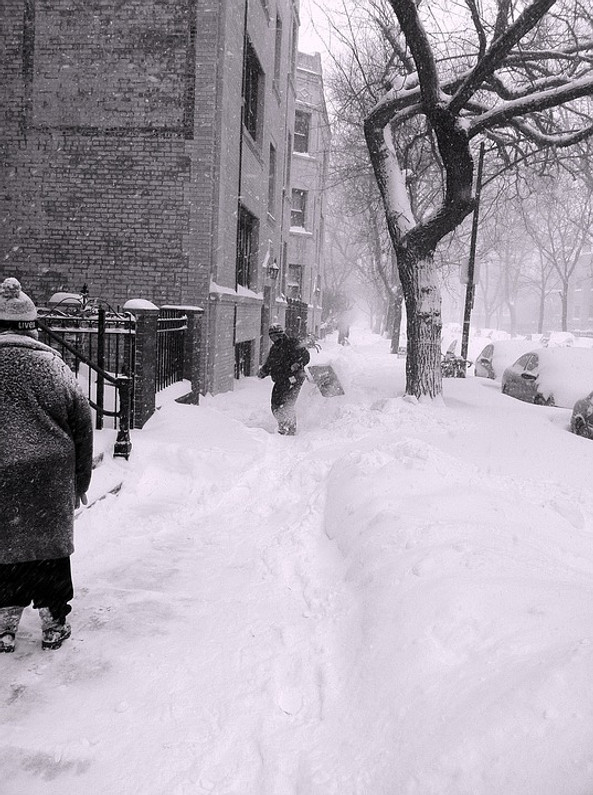6 Essential Safety Tips to Follow When Shoveling Snow

It may not seem like a dangerous activity, but shoveling snow contributes to thousands of injuries each year in the United States. According to one report, more than 11,500 Americans are treated in hospital emergency rooms each year for injuries related to shoveling snow. While most of these injuries are minor, there have even been reports of fatalities attributed to this otherwise common winter activity. So, before you head outdoors this winter to shovel snow off your driveway or sidewalk, consider the following six safety tips.
#1) Wear the Right Footwear
You shouldn't wear just any pair of shoes in which to shovel snow. If they have worn soles with little or no traction, you may slip and fall on the icy surface. Therefore, it's recommended that you wear slip-resistant, waterproof boots.
#2) Push, Don't Scoop, the Snow
There's a right way and a wrong way to shovel snow. Some people assume that the right way is to scoop the snow off their driveway and transport it to a different area. In reality, though, the safest and most effective method is to push the snow rather than scoop it.
#3) Take Breaks
Most injuries associated with shoveling snow are repetitive strain injuries (RSIs) like tendonitis and muscle strains and sprains. By taking regular breaks -- aim for a five-minute break every 20 or 30 minutes -- you'll reduce the amount of repetitive stress to which your body is exposed, thereby lowering the risk of these and other related injuries.
#4) Shovel Light, Powdery Snow
Don't try to shovel heavy compacted snow. Rather, only shovel snow that's light with a powder-like consistency. If the snow is compact, you may struggle to push it out of the way. And even if you're able to push it, you'll expose yourself to potential injury due to the sheer strength this requires.
#5) Wear Multiple Layers
Remember to wear multiple layers when shoveling snow to protect against hypothermia. It's not uncommon for homeowners to spend a half-hour or longer shoveling snow each day. And if you don't wear enough clothing, this can leave you susceptible to hypothermia.
#6) Drink Waters
It's easy to get dehydrated when shoveling snow. The cold winter temperatures can trick your body into thinking you are hydrated when you are actually dehydrated. To protect against dehydration, drink water before, during and after you shovel snow.
Recent Posts
-
Fire Safety in the Workplace: What You Need to Know
What steps are you taking to prevent fires in your workplace? According to the U.S. Occupational Saf …Aug 23rd 2023 -
Is It Safe to Go Jogging With a Cold Infection?
If you're suffering from a cold infection, you might be wondering whether it's safe to go jogging. T …Aug 22nd 2023 -
5 Safety Tips to Follow When Using a Powder-Actuated Tool
Powder-actuated tools are commonly used to join materials to steel and concrete. Also known as Hilti …Aug 20th 2023




